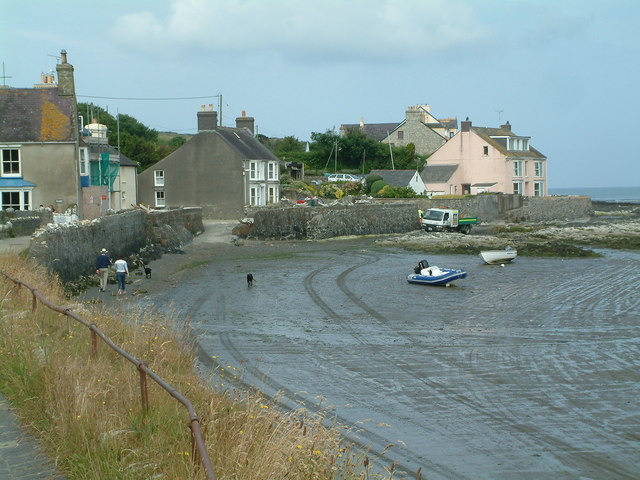You only have to look around you to realise that Porthgain's past was much more industrial than its leisure-oriented present. The remains of large brick hoppers are still clearly visible, recalling a time in the early 1900s when crushed granite was brought to the village prior to shipment from what was at the time an important industrial port. 40,000 tons of the stuff were shipped yearly by coastal steamers, and the granite-crushing continued until 1932 when the crushing plant was closed. Slate from a quarry to the south was also shipped out of the harbour. The hoppers have been left in place as a scheduled ancient monument, in addition to which the village was made a 'conservation area' in 1987. Prior to this period the main activities were the 'burning' of limestone and fishing, which continues to this day with the local fishing boats sharing the harbour with leisure boats. The village pub, The Sloop, has a characterful interior with plenty of nautical images and memorabilia and a small terrace overlooking the harbour. Once upon a time the boatmen were able to moor up right alongside the pub, causing it to be known as the 'Step In'. Many visitors to the village use it as a starting point for a walk along the wonderful Pembrokeshire Coast Path, aided by a bus service called the Strumble Shuttle which, with careful timing, enables walkers to walk one way and bus the other. The Porthgain to Abereiddi stretch of the path was once voted one of the top ten walks in the country.
Map of the area.
 | |
| Rusting anchor, Porthgain - geograph.org.uk - 1524078. Photo by Pauline Eccles, via Wikimedia Commons. |


